|
Zdzisław Beksiński Gallery
벡신스키 Zdzisław Beksi?ski 1929년 폴란드 남동쪽 카르파티아산맥 근처의 도시 샤녹(sanok)에서 출생하였다. 어린 시절은 제2차 세계 대전의 와중에서 우울하게 보냈으며, 아버지가 측량기사인 것에 영향을 받아, 1947년 폴란드 독립 후 Cracow에서 건축학을 공부하였다. 대학 졸업 후에는 교수로 취임하여 전후 폴란드 재건에 힘썼다. 전쟁의 와중에 많은 사람이 징용되고, 폴란드의 문화는 비천한 것으로 전락된 시기에 어린 시절을 보낸 영향으로 위기감과 상실감, 절망감을 작품 곳곳에서 볼 수 있다 파스텔과 연필을 주로 사용한 드로잉은 인간의 형상을 왜곡시킨 것이 대부분이며, 그가 추구한 추상적 구조는 그의 정신세계를 표현한 것으로 보인다. 드로잉, 페인팅, 플라스틱 재료의 사용, 철판 조각과 석고 부조를 제작하였는데, 이것은 단순히 물성이 변형되어 자유로운 형태로 표현된 것에 그치지 않고, 전쟁으로 인한 파괴와 대지의 죽음, 황량한 도시의 이미지를 표현한 것이다. 1950~1960년대의 작품은 볼펜과 잉크를 사용한 것이 많은데, 주제가 매우 에로틱하고 생생하다. 피부의 파괴를 통해 뼈와 살이 분리되는, 신체가 분해되는 과정도 묘사하였다. 이러한 벡진스키의 은유법은 대부분 삶의 단조로움을 표현한 것이며, 그가 나타낸 에로틱한 꿈과 상상력의 세계는 '환시 미술'이라는 독특한 장르를 구축하였다. 1958년-비평가들로부터 그의 사진작업들이 호평을 받기 시작함. 그후, 그는 드로잉(drawing)작업에 심취함. 그의 극사실적인 묘사와 난해한 작업이 시작됨. 폴란드 현대예술의 대표주자가 됨 1977년 - 가족과 함께 폴란드의 수도 바르샤바(Warsaw)로 이주. 폴란드를 비롯,유럽에서 수많은 전시회를 함. 1990-새로운 매체인 컴퓨터그래픽 작업 시작 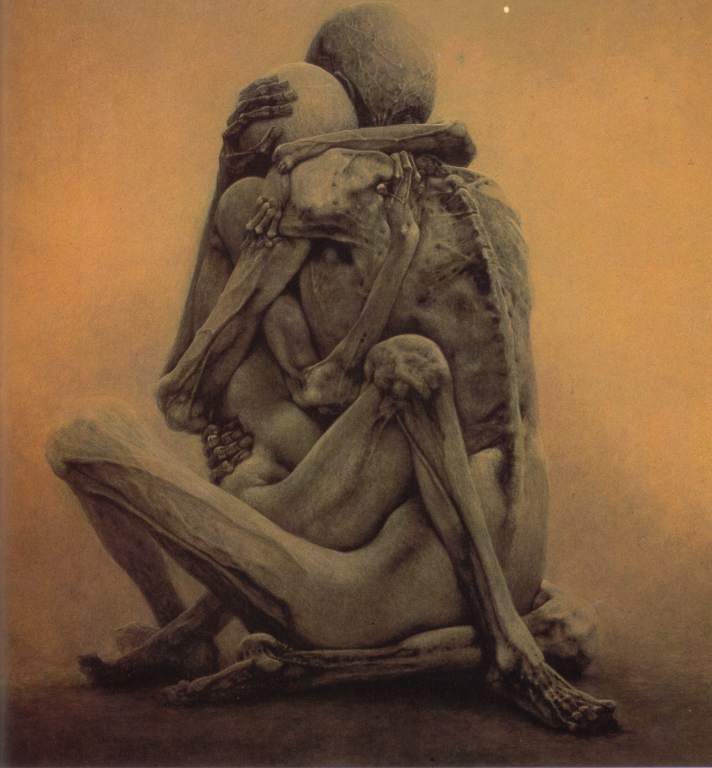 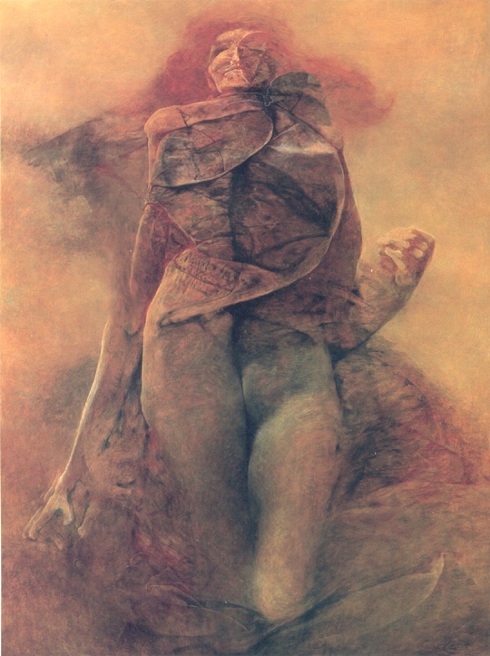 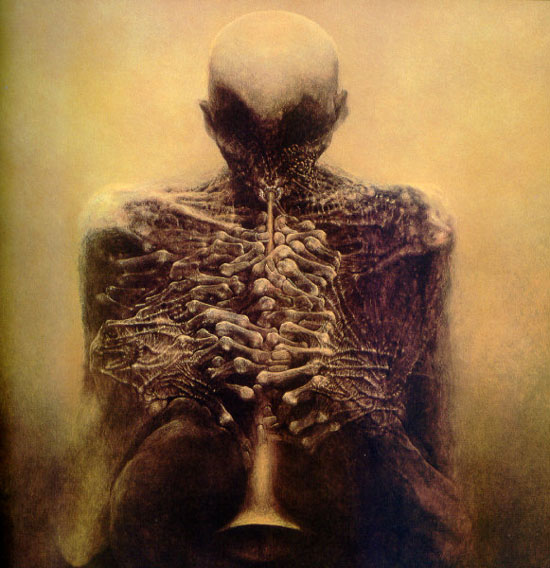 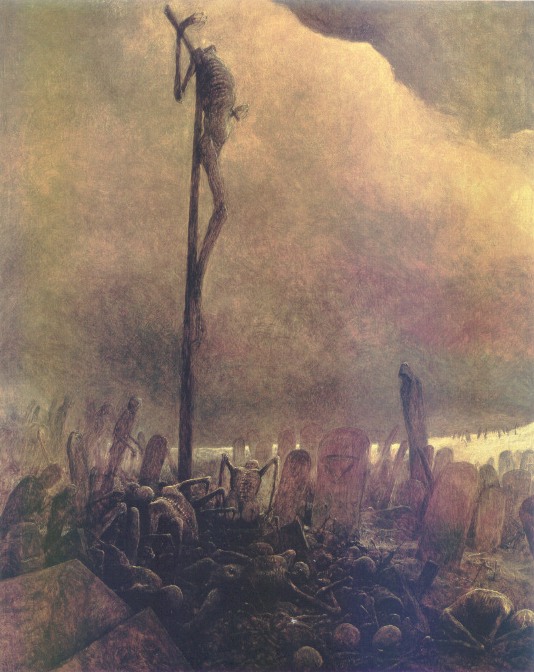  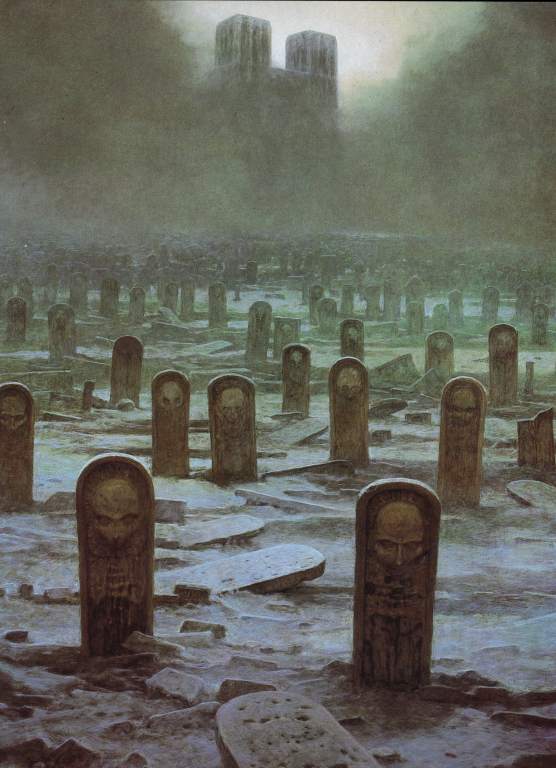 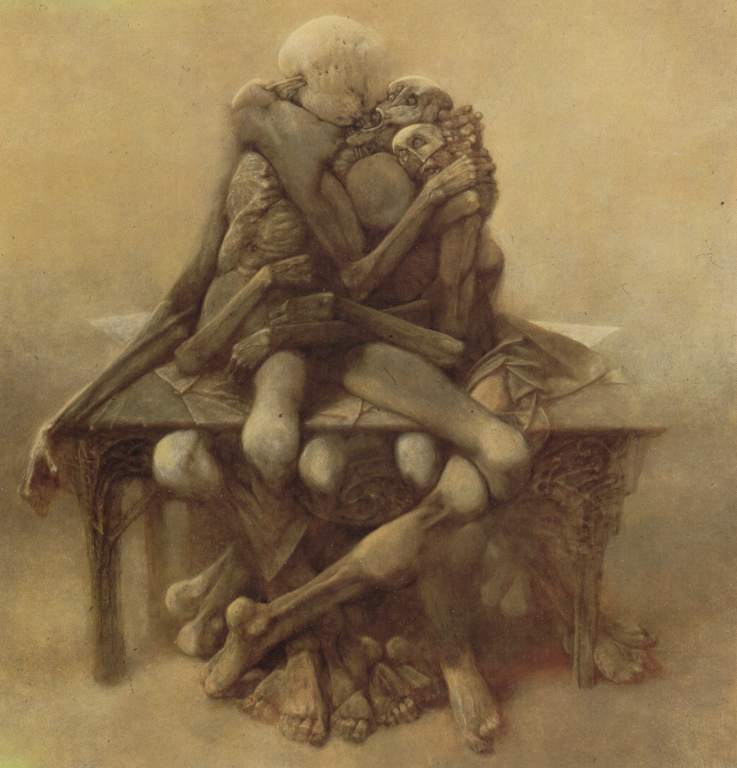 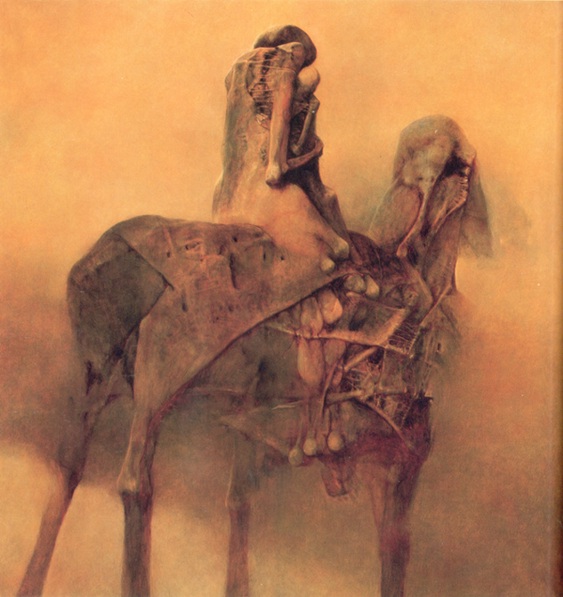
굳이 이해 하려 들지마십시요... 그림에 대한 의미는 무의미 한 것입니다. 제가 그리는 그림은 무슨 상징 따위를 갖고 그린 것이 아닙니다. 이미지에 대한 명백한 해답을 가지고 있지않은 그런 이미지들에 저는 이끌리고 말지요. - Zdzislaw Beksinski -
He does not appear in public, and does not exhibit his paintings. When museums of collectors exhibit them his does not show up. He works on his paintings twelve hours a day against a background of classical music. They are always painted on hardboard, signed on the back, and they bear no titles. He was born on February 24th 1929 in Sanok, a small town near the south-east border of Poland. His father was a surveyor, his grandfather a building contractor, and his great-grandfather Mathieu, an insurgent of 1863, was the founder of a wagon factory. Under the German Occupation Beksinski continued his studies at a secondary level, first in a school of commerce, then in a clandestine highschool. in 1947, after the liberation, he entered the Faculty of Architecture in the Mines and Steelworks Academy in Cracow under pressure from his father. In 1951 he married Miss Sophie Stankiewicz, and in 1952 he obtained his degree in architecture. Due to the obligation of work which was at that time imposed on young graduates, he started working in a State building enterprise where he supervised the building lots. Although he had been drawing since his early childhood, he applied himself to it seriously in 1953. He also concentrated on painting, photography and sculpture, and thus prepared his way out of a profession which he disliked. In 1958 his only child, Thomas, was born. In the same year his first exhibition of plastic works, and especially abstract relief, was held in Poznan. At that time he was still a member of the Union of Polish Artist-Photographers and he took part in numerous exhibitions of photography in Poland and abroad. In 1960 he abandoned photography and in his plastic works broke away from the avant-garde. This break was felt by some as an actor treason, since his early creation had aroused much hope among the partisans of abstract art. But is was also this step towards fantasy expressionism, noted during the exhibition of 1972 organized by Mr. and Mrs. Bogucki in the "Contemporary" gallery in Warsaw, that was to make him known to a wider public. The polemic aroused by his painting reached its climax in 1975 when after a poll organised by art critics he was declared "the best painter in the thirty years of the People's Republic of Poland" thanks to the votes of certain participants who gave him almost all their points, while others refused to give him even one... In 1977 he left Sanok and moved to Warsaw only to isolate himself from the world even more radically because of the inconvenience arising from the celebrity he now had in his home town. When he moved into the Polish capital he hoped to mingle in the anonymous crowds of a big metropolis. Despite the curiousity he arouses, he refuses to take part in any manifestations and accepts neither awards nor medals. He has practically ceased to exhibit, receives only one or two journalists a year, when he grants them an interview which does not touch upon current events. A charismatic personality and a man with a profound spirit, Beksinski has never left Poland, doesn't speak any foreign language and has never been a member of any ideological group; he hates and despises politics. by Piotr Dmochowski 번역문 작업물의 이미지에 걸맞게, Beksinski는 고립된 인간이다. 그는 대중앞에서도, 그의 작품전시회에서조차 얼굴을 내밀지 않는다. 미술관에서 그의 작품들을 전시할 때에도 나타나지 않는다. 그는 클래식계열의 음악을 들으며 하루 12시간씩 작업에 정진한다. 작업물들은 항상 하드보드지위에 그려지고 뒷면에 사인이 새겨지며, 제목은 붙여지지 않는다. Beksinski는 1929년 2월 24일 폴란드의 남동쪽 경계선 부근의 작은 시골 마을인 Sanok에서 태어났다. 아버지는 측량관이었고 조부는 시공업자, 증조부 Mathieu는 1863년 당시 반란군이자 마차 공장의 창업주였다. 독일 통치하에서 Beksinski는 처음에는 상업학교에서, 나중에는 비밀 고등학교에서 공부를 지속했다. 해방 뒤 1947년, 그는 아버지의 강압 아래 Cracow의 광산 · 제강 대학의 건축학부에 입학했다. 1951년에 Sophie Stankiewicz양과 결혼하고 1952년에는 건축학부를 졸업했다. 당시 젊은 졸업생에게 부과된 책임감에 따라, 그는 주 관할의 건축사무소에 들어가 건물 분양 추첨일의 감독을 맡게된다. 그는 일찌기 어려서부터 그림을 계속 그려왔지만 1953년부터는 본격적으로 작업에 매진한다. 또한 그가 싫어했던 직장에서 벗어나기 위해 회화, 사진, 조각 등에도 전념했다. 1958년에는 유일한 외동아들 Thomas가 출생한다. 같은해 추상적 면이 강한 그의 첫번째 플라스틱작품 전시회가 Poznan에서 개최되었다. 그즈음 그는 계속 폴란드의 예술가, 사진가 협회 회원이었고 폴란드 대내외로 대규모의 사진 전시회 개최를 맡기도 했다. 1960년, 그는 사진을 버리고 플라스틱 작품도 전위예술(아방가르드)로부터 단절한다. 이 단절은 그의 초기 작품들이 추상예술작품계에 큰 희망을 불러 일으킨 뒤였기에 어떤 배신처럼 느껴진 일이다. "하지만 그것 역시 환상 표현주의에 한발짝 더 내딛기 위함"이었음이 1972년 Bogucki 부부에 의해 정리된 바르샤바의 현대 갤러리에서 개최되었던 전시회에서 전해진다. 이 전시회는 그를 더 많은 대중에게 알려지게 하는데 공헌했다. 1975년 그의 작품성이 거의 클라이맥스에 도달했을 때 논쟁이 일었다. 투표 끝에 예술 평론가들이 그를 "30년안의 폴란드 최고의 화가"로 뽑았던 것이다. 다른 이들이 Beksinski에게 한 표도 던지지 않았을 때 거의 만점의 포인트를 준 투표 참가자들에게 감사를 표한다. 1977년에 그는 급히 세상으로부터 스스로 고립하고자 sanok을 떠나 바르샤바로 이사갔다. 고향에서 치른 유명세의 불편함때문이었다. 폴란드의 수도로 이사왔을 때 그는 자신이 큰 도시의 익명의 군중속으로 묻히길 바랬다. 사람들의 궁금증에도 불구하고, 그는 어떠한 발표나 상, 메달의 수여도 거부했다. 그는 전시회를 중단했고 일년에 한두명의 인터뷰에만 응했다. 또 그가 승낙한 인터뷰에서는 현재 진행되는 어떤일도 다루지 않아야만 했다. 카리스마적 성격과 심오한 영혼을 갖춘 남자, Beksinski는 절대 폴란드를 떠나지 않았다. 절대 외국어로 말하지 않고 어떤 이데올로기 단체에도 속하지 않았다. 그는 정치를 미워하고 경멸한다.
|
'etc,' 카테고리의 다른 글
| 귀가 (0) | 2005.04.21 |
|---|---|
| 이중섭 (0) | 2005.03.10 |
| 단순한 기쁨 (0) | 2005.01.02 |
| 재미로 보는 혈액형... (0) | 2004.12.17 |
| 벗겨진 진실-에곤 쉴레 (0) | 2004.12.17 |





















댓글